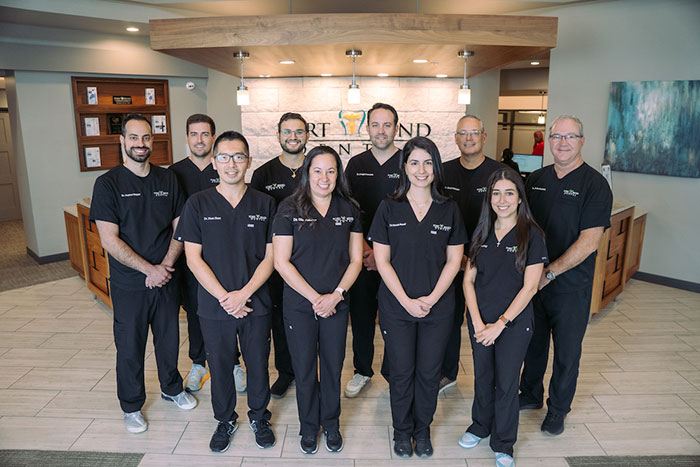
Do you see people with straight teeth as more successful or perhaps wealthier? According to a study conducted by Kelton Research, 58% of Americans would say yes to both. Many people turn to orthodontic treatments, such as Invisalign® clear aligners or braces to correct misaligned teeth.
At Fort Bend Dental, our dentists educate people from Missouri City, Richmond, TX, and Fort Bend County to help them pick the right orthodontic treatment for their needs. Some patients ask us “Is Invisalign more effective than traditional braces at straightening teeth?” Here, we will answer that question and more.
Which Treatment Is More Effective?
The efficacy of treatment depends upon the current alignment of teeth and the movements necessary to achieve ideal alignment. According to a comparative study published by BMC Oral Health, both aligner systems like Invisalign and traditional braces were effective. Researchers also revealed that:
- Clear aligners had an advantage in the segmented movement of teeth in short durations.
- However, braces were more effective in producing adequate occlusal contacts, controlling rotated teeth, and maintaining long-term retention of treatment results.
Which Treatment Is Faster?
Patients must wear traditional braces 24 hours a day, seven days a week since they’re not removable like Invisalign aligners. Because they are fixed in place, traditional braces remove the potential for patient non-compliance. As a result, treatment with braces may be faster.
A researcher at Texas A&M conducted a study comparing the quality of treatment between Invisalign and traditional fixed braces. He found that “the braces group finished 4.8 months faster than the aligner group.”
Dentists instruct patients to wear Invisalign aligners for 20-22 hours per day, but what if they don’t? When patients don’t wear their clear aligners as prescribed, treatment may require extra time and additional trays. In some cases, teeth shift back toward their initial position, erasing treatment progress entirely.
Which Treatment Is Better for Gum Health?
A surprising benefit of straight teeth is that they are easier to clean, which helps keep the gums healthy. Crowded teeth can trap bacteria and food particles, leading to a higher risk of tooth decay and gum disease. Brushing and flossing teeth thoroughly and regularly removes disease-causing oral bacteria, but overlapping teeth can make cleaning more difficult.
A cross-sectional study by BMC Oral Health reported: “significantly better gingival (gum) health conditions were recorded in Invisalign patients, whereas the amount of dental plaque was also less.”
Because Invisalign is removable, patients have direct access to the spaces between the teeth and the surface of the teeth, where oral bacteria and food particles hide. Fixed orthodontic appliances (braces) limit accessibility to all surfaces of a tooth, making thorough cleaning more difficult. Ineffective cleaning can lead to gingivitis, and if left untreated, gingivitis turns into periodontitis.
Which Treatment Is Better for My Needs?
Both Invisalign and traditional braces can be effective at straightening teeth. Many people have a preference for Invisalign because of the clear aligners and simple treatment process. However, severe malocclusion may require braces in order to achieve optimal dental health. Ultimately, it depends on the condition of a patient’s teeth.
Learn More About Invisalign and Braces
To learn which treatment is most suitable for your case, consult with dentists who understand orthodontics and smile aesthetics. Schedule an appointment with one of our dentists by calling (281) 499-3541 or messaging us online today.
Posted on behalf of

